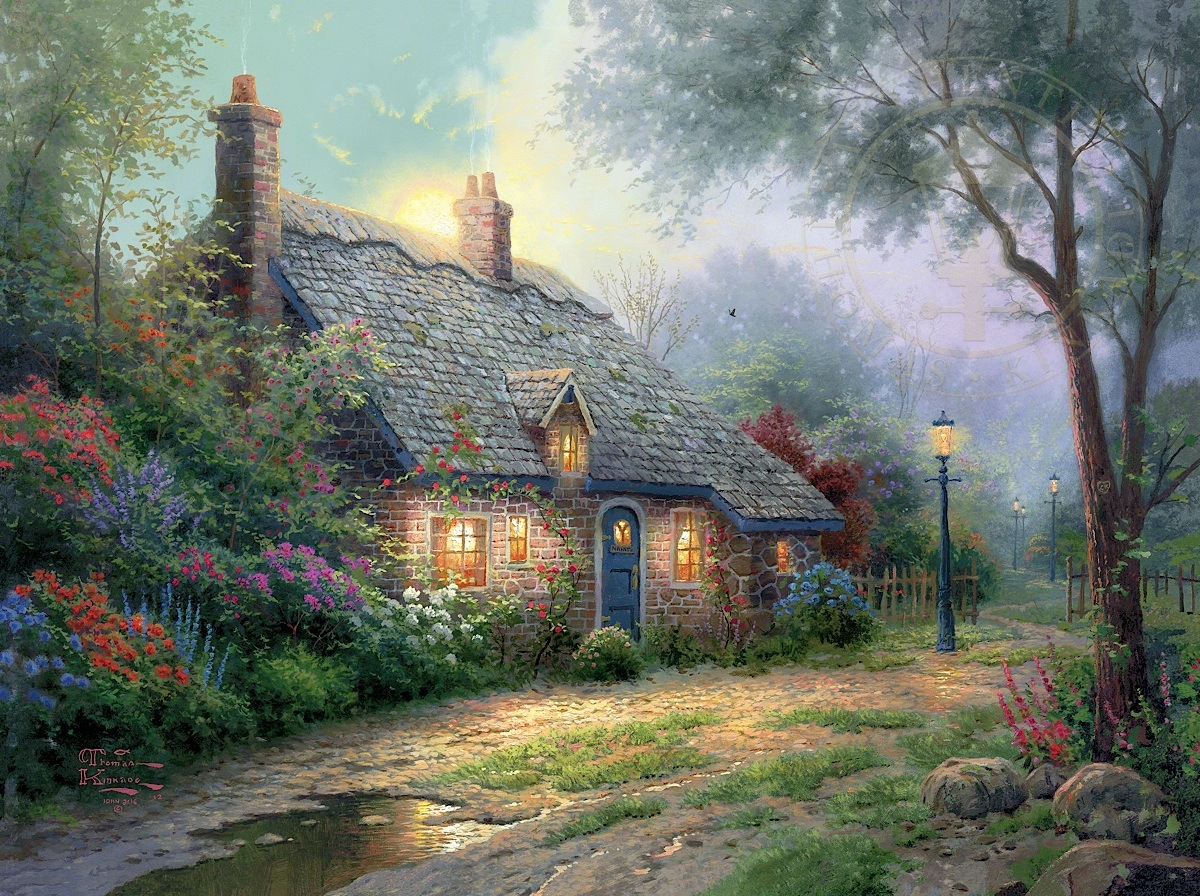to me they do. not for any clever hidden reason—i just find that some of them (particularly the cottages and gazebos) straightforwardly accomplish what they're supposed to: conjuring up a utopian world of safety and serenity and prettiness. the bible belt kitschiness makes them uncanny, too. but not enough to negate the coziness. (if anything, maybe the combination is what draws me in.) eons ago i was going to write something called "when imagination takes the path of least resistance, where does it end up?" that was going to explore that sort of hyper-idealized landscape. it's a vast canon extending way before and after kinkade, one that i guess i first became aware of through /comfy/ threads on 4chan. contrary to what critics are trained to say, that sort of thing offers as important a window into the psyche as any dark, angsty, confrontational art. it's compromising in the opposite way. but back to kinkade specifically, from even bare minimum of research it's obvious that a) he was a troubled guy, which eventually led to his death, and b) he had a genuine appreciation for art (franz kline, for example, was one of his favs). so as much as his output can be seen as a calculated business enterprise, i do think the origins of what he was doing lay in genuine longing








